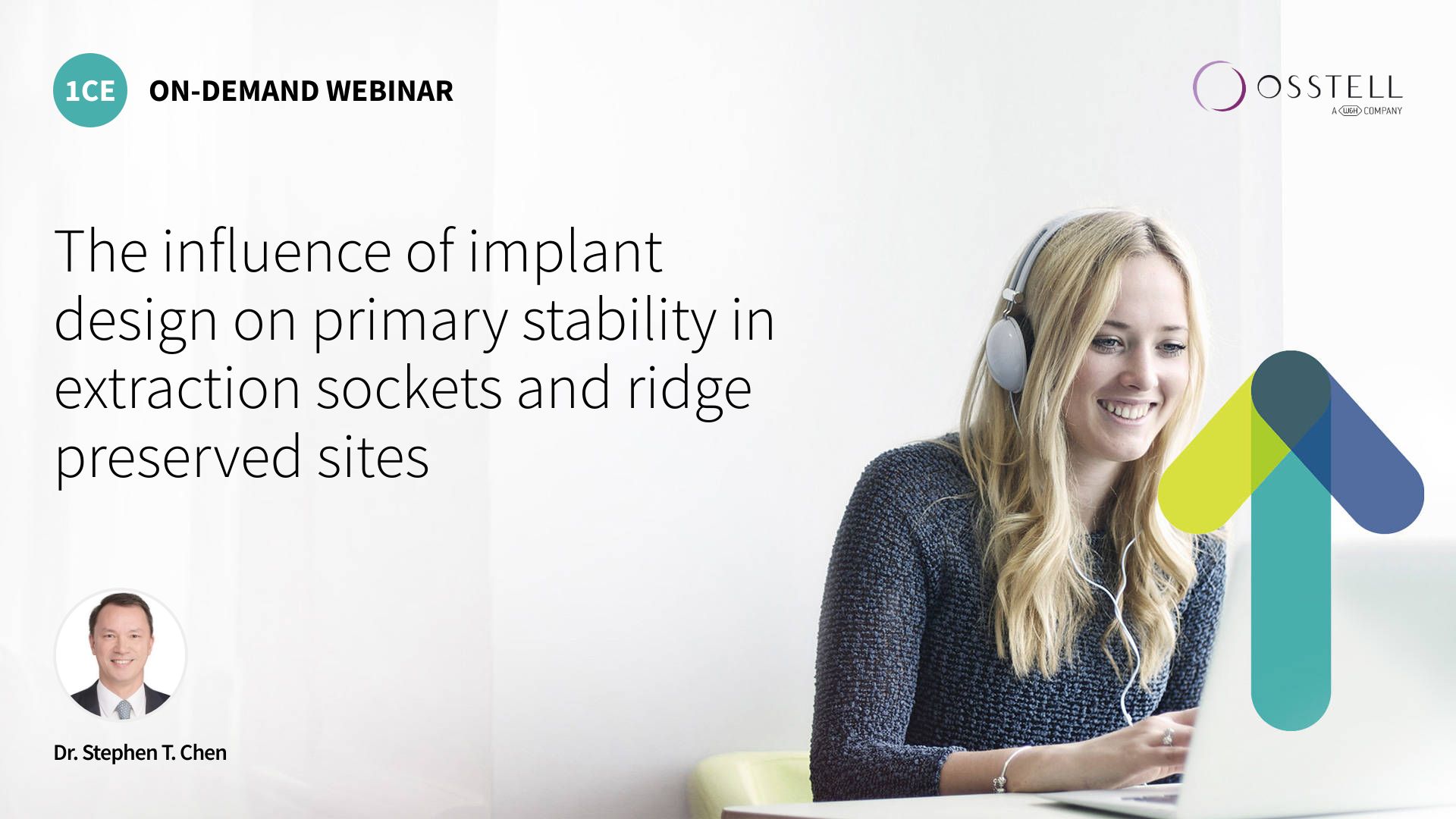PLEASE LOGIN OR REGISTER
In order to attend an ITI Academy live webinar, you must first create a free account. If you already have an account, please log in.
Login
Register now

In order to attend an ITI Academy live webinar, you must first create a free account. If you already have an account, please log in.
Login
Register now
Thank you so much
Thank you
Great lecture
Thank you
Great webinar, Stephen. Greetings from Basel!
It was amazing how much clarity you brought in such a short presentation. Thank you!
Thank you, Dr. Chen.
Than k you! From Japan Yoji Kamiura
Very informative talk. Thank you
Thank you for an excellent webinar , very informative and great learning opportunity for us clinicians. 🙏🏽
It was a very informative session, Dr Chen. Good to see you and a pleasure to listen to you as always!
How to be particular Abt the implant design based on the region of implant placement..
How can this compression and osteoclast activity be interpreted on versah burrs that solely rely on compression to create better initial stability ? In essence this would mean more resorption during the later stages of healing after 10-12 weeks
Muchas gracias por compartir! exelente disertacion!
Does Photo-functionalization of Implant surface using UV rays, improve the longevity os Implants
For ridge preserved sites, does the kind of graft used (e.g allograft vs xenograft) lead to different ISQ values at the time of implant placement?
Thanks for sharing this interesting information
In type IV bone of mandible, which implant design nowadays will you recommend to use first?
Congratulations on a brilliant presentation. Thank you.
wich ISQ is your minimum for loading an implant.
Can you please explain the reverse insertion torque for us? What’s the principle and indication?
Thanks Stephen. Do you have any recommendations for RFA (ISQ meters)? Yours seems to give two readings at once. Also, do you ever get ISQ readings where values vary significantly? In that case, do you put emphasis on the high value, or the low value? Or must all readings be >70 to be a “pass”?
What is the optimal implant design and protocol for immediate placement with immediate provisionalization in an anterior case?
Doe’s the knife-thread implant design lead to less compression and consequently less peri implant tissue remodeling since this type of thread reduces compression while promoting a cutting engagement with the bone?
What is your opinion regarding the Versa Osseodensification system for better osseointegration.
Second question what do think regarding the socket shield technique and mor implant stability woth this?
How should lower initial ISQ values be interpreted in modern implant designs with high insertion torque — especially when expectations may be influenced by the implant’s macro geometry?
Some implants like (Megagen) it have aggressive threads that gives more primary stability is it better than non aggressive threads ?
At the same bone density, would different insertion torques (high vs. low) affect the stability dip?
Could higher torque, by exerting more pressure on bone, lead to faster or greater resorption and a more pronounced dip?
The diagram perfectly demonstrates the insertion of an immediate parallel/tapered implant, which needs a change of insertion angle after engaging the bone. How is it going to be if the implant is inserted with a surgical guide?
How much underprepration should be done to get adequate implant stability and also not risk over torquing
Can I watch the webinar later please
After wich time we have the peak of ISQ?
Ok
Thank you for joining today’s webinar with Dr. Stephen T. Chen. If you have any questions for our expert about today’s presentation, please write them in this chat box and they will be addressed during the Q&A session.